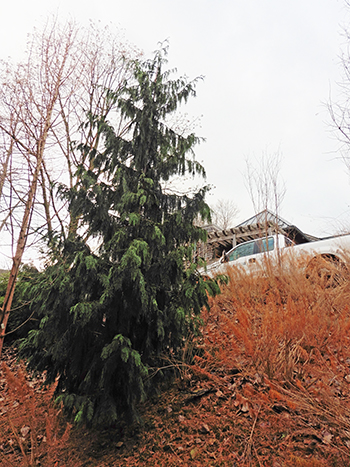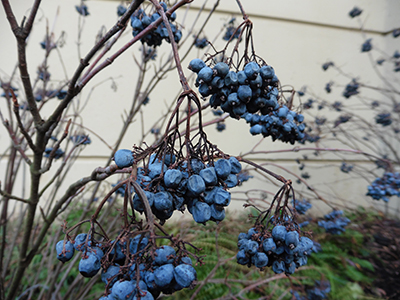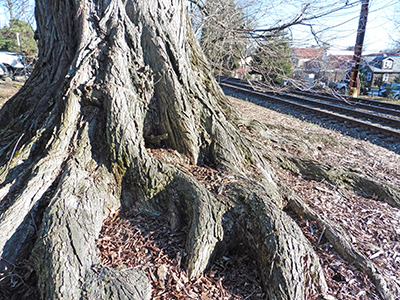
Plants of the Week: December 17

Cupressus nootkatensis ‘Pendula’
My sources are generally disparate and inconclusive when it comes to a reliable taxonomic designation for the Alaska-cedar. The North American west coast native conifer sometimes called Xanthocyparis nootkatensis and at other times referred to as Callitropsis nootkatensis is at least reliably placed in the true cypress family, Cupressaceae, as is evident by its scale-like leaves and shield-shaped umbo formations on their round cones. The final say in this dispute however, for my purposes, is granted to the American Conifer Society who label it as Cupressus nootkatensis. Sources seem to indicate the first wild specimen was discovered and identified in Nootka sound on Vancouver Island, hence the species name. The cultivar is an upright weeping form that, though erect, bears a weary look as the smaller branchlets hang limp. Specimens can be found on Willets Bank near the Wister Center. photo credit: J. Bickel

Viburnum nudum ‘Winterthur’
The glaucous-blue pendulous chandeliers of berries of Viburnum nudum, though shriveled, hold their striking color well into the cold season. A few small young specimens, expertly planted, backed by a cream-colored wall highlights the berries of these small shrubs near the Matchbox by contrasting in a very attractive way. The cultivar ‘Winterthur’, named in honor of the grand estate in Delaware, is a slightly compact version of the species. Missouri Botanic Garden’s Plant Finder indicates that the attractive berries are edible, though sour. photo credit: J. Bickel

Ulmus americana
The enormous Ulmus americana by the train tracks on the south side of campus has an amazing crown that is highlighted when the leaf canopy has fallen for the winter. The clear view reveals the wild sharp angles and turns of the branches. Also attractive is the deeply furrowed bark covering and accentuating very long, snake-like roots reminiscent of the great buttress roots of tropical mahogany. The American elm is a species under threat, as many people know, by infection of Dutch elm disease, a fungal disease passed along by bark beetles. Several very old and large specimens that are treated regularly with direct injections still stand on Swarthmore’s campus. photo credit: J. Bickel





No Comments